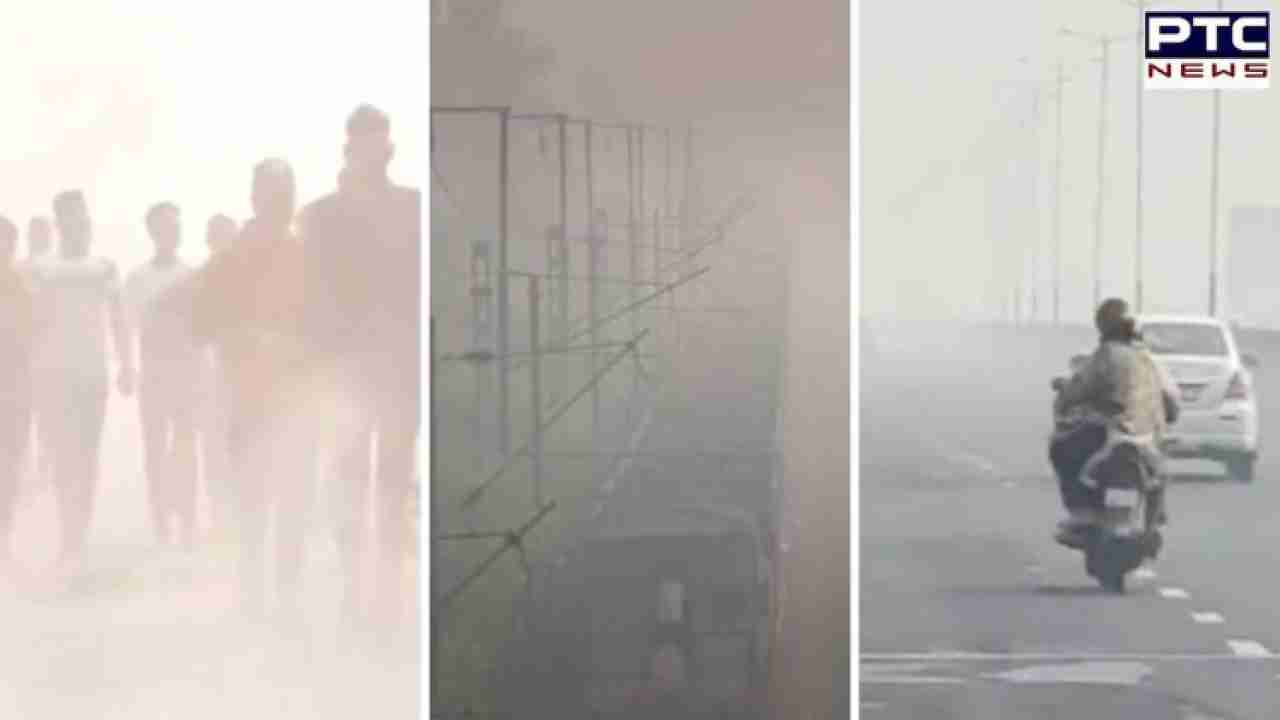

Air pollution: Delhi's air quality remains 'very poor' following season's worst pollution levels
Delhi's air quality: Delhi continues to grapple with hazardous air quality, edging closer to a public health crisis. The city registered an air quality index (AQI) of 364 on Wednesday, the worst this season. As of 8:00 am on Thursday, the overall AQI was recorded at 351, firmly in the "very poor" category. Some areas, such as Anand Vihar (413), Bawana (401), Mundka (420), and Punjabi Bagh (416), experienced "severe" air quality conditions at 8:05 am.
On Wednesday, parts of the city, including Mundka (417), Anand Vihar (416), Wazirpur (409), and Punjabi Bagh (408), reported similarly high AQI levels. Additionally, Bawana and Rohini saw brief spells of severe air quality on Wednesday afternoon.
_f674bc9073936e945ae63da99d4a3562_1280X720.webp)
Despite a series of efforts to mitigate pollution, the air quality is expected to worsen over the coming weeks. The current haze shrouding Delhi is primarily due to local pollutants accumulating in the air, exacerbated by calm winds and dropping temperatures. The impact of crop residue burning in neighboring states remains relatively low, thanks to favorable wind patterns.
According to the Union earth sciences ministry's Decision Support System (DSS), farm fires contributed only about 13% to Delhi's PM2.5 (ultra-fine particulate pollutants) levels on Wednesday. The city's transport sector accounted for 11.4%, while neighboring Gautam Budh Nagar contributed 10.4%. It's worth noting that the DSS provides estimates rather than real-time measurements.
Farm fires in Punjab and Haryana have increased in the past week but are not yet as high as typical for this time of year. On Tuesday, the two states reported 1,556 farm fires, nearly triple the number from a week earlier (442). However, these figures remain lower than the counts from October 31 of the previous year (1,769) and 2021 (3,137). Year-on-year data on stubble fires may not always be directly comparable due to variations in cropping and harvesting practices.
The direction of wind currents plays a crucial role in determining the impact of farm smoke on Delhi. A southeasterly wind takes most of the farm-related pollutants towards Rajasthan and beyond, while a northwesterly wind brings them towards the city.
The effects of severe air pollution are particularly harmful to the elderly, children, and individuals with pre-existing health conditions or compromised immune systems. However, even healthy adults are at risk, as polluted air can lead to bronchitis, asthma, anemia, acute respiratory infections, and nausea.
A 2018 study by the World Health Organization (WHO) found that pregnant women exposed to air pollution are more likely to give birth prematurely and have underweight infants. Air pollution can also impact neurodevelopment, cognitive abilities, and even trigger childhood cancer. Children exposed to high levels of air pollution are at greater risk of developing chronic diseases like cardiovascular issues later in life.
The spike in pollution has led to an increase in the number of patients with severe coughs, allergies, and respiratory illnesses.
Delhi's sky is expected to clear with some fog on Thursday and Friday. The predominant surface winds, which come from the east and northwest, are expected to be calm in the morning on Thursday.
- With inputs from agencies
